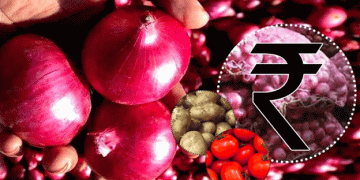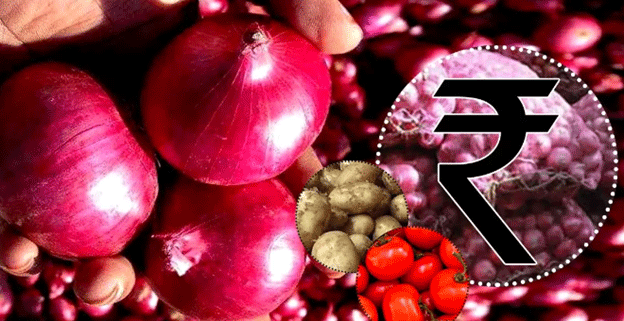In recent weeks, onion prices have once again become a major topic of concern in India. As onions are a staple in Indian kitchens, any fluctuation in their price has a broad economic impact. The government has implemented a series of measures, including lifting export duties and setting stock limits, to manage the escalating prices.
Government Interventions and Market Reaction
Earlier this year, the Indian government imposed a 40% export duty on onions to ensure sufficient domestic supply and to keep prices under control. However, with onion prices continuing to rise, particularly in major cities like Delhi, Mumbai, and Chennai—where they have reached up to ₹60 per kilogram—the government reversed this decision by removing export duties altogether. This move is aimed at stabilizing local prices and increasing onion supply in retail markets across India.
To further tackle the issue, the government has started releasing its buffer stock, estimated at 4.7 lakh tons, through mobile vans and select retail outlets like NCCF and NAFED. In Delhi, for instance, onions are currently being sold at a subsidized rate of ₹35 per kilogram, a move aimed at preventing a sharper price rise.
Why Are Prices Rising?
The spike in onion prices can be attributed to several factors, including supply chain disruptions, delayed harvesting, and weather conditions. This year, the Kharif onion crop was sown on a larger scale, with Nashik alone cultivating 30,000 hectares of onions. However, the bulk of the Kharif onions, which have a short shelf life, are expected to hit the market only by mid-October. In the meantime, the availability of summer onions, which are typically harvested in March-April, has dwindled.
The Impact on Farmers
Farmers are bearing the brunt of the recent government actions. While the removal of export duties might open up international markets, other measures like stock limits can depress local prices just as farmers are ready to bring their produce to market. Many farmers are already facing thin profit margins due to high input costs, and these new regulations could make it more difficult for them to sell at competitive prices. The stock limits are aimed at controlling hoarding, but they restrict farmers and traders from selling their produce at optimal times.
Consumers Feel the Pinch
From the consumer’s perspective, the market instability has meant paying significantly more for onions. Retail prices have spiked from ₹38 per kilogram last year to as much as ₹60 this September. While the government’s buffer stock release has provided some temporary relief, the question remains whether it will be enough to offset the broader supply shortages until the Kharif onions are fully harvested.
What Lies Ahead?
Both buyers and farmers are in a precarious position. Farmers might face lower revenues due to market restrictions, while consumers continue to pay high prices at the retail level. With onion demand remaining strong and supply issues persisting, it’s unclear how effective the government’s interventions will be in stabilizing prices over the next few months.
The onion market remains volatile as government policies continue to shape the supply and price dynamics. While short-term measures such as releasing buffer stock and lifting export duties offer some relief, both farmers and consumers are likely to experience challenges. As the Kharif harvest begins in October, the true impact of these policy changes will become clearer, determining whether farmers can recover lost income and whether prices stabilize for consumers.































